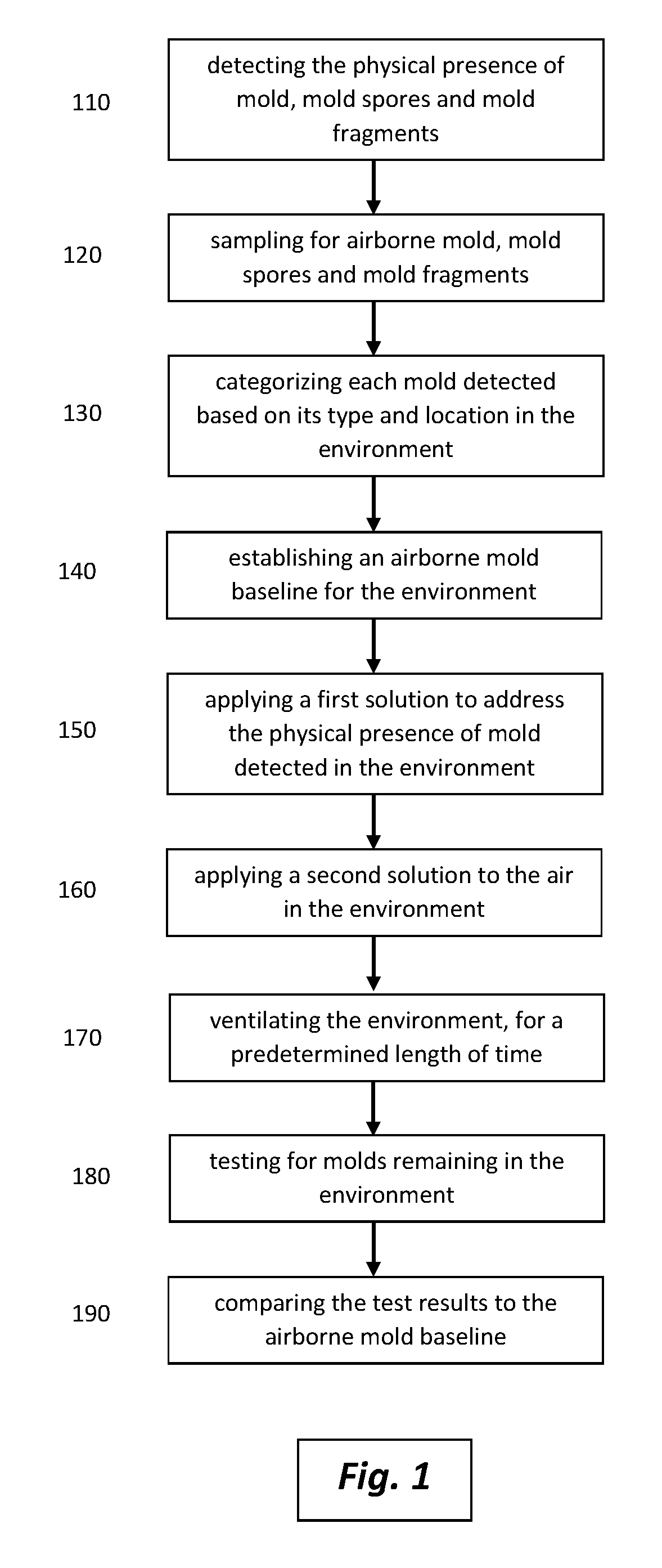Baseline testing, analysis and treatment of an environment
a technology of environment and baseline testing, applied in the field of system and method for remediating mold, can solve the problems of mold growth, difficult to quantify with certainty, and affect the % of households in the united states
- Summary
- Abstract
- Description
- Claims
- Application Information
AI Technical Summary
Benefits of technology
Problems solved by technology
Method used
Image
Examples
Embodiment Construction
[0022]The ensuing description provides embodiments only, and is not intended to limit the scope, applicability, or configuration of the claims. Rather, the ensuing description will provide those skilled in the art with an enabling description for implementing the embodiments. It should be understood that various changes may be made in the function and arrangement of elements without departing from the spirit and scope of the appended claims.
[0023]According to various embodiments described in detail herein, the present disclosure relates to systems and methods for assessing, remediating and testing an environment for mold. In one embodiment, the systems and methods comprise the step of making observations within the environment to detect possible evidence of mold. In this embodiment, the step may entail looking for visible mold growth in the environment, including by way of example but not limitation, mold growth occurring on structural components within the environment. In other emb...
PUM
| Property | Measurement | Unit |
|---|---|---|
| particle size | aaaaa | aaaaa |
| length of time | aaaaa | aaaaa |
| humidity | aaaaa | aaaaa |
Abstract
Description
Claims
Application Information
 Login to View More
Login to View More - R&D
- Intellectual Property
- Life Sciences
- Materials
- Tech Scout
- Unparalleled Data Quality
- Higher Quality Content
- 60% Fewer Hallucinations
Browse by: Latest US Patents, China's latest patents, Technical Efficacy Thesaurus, Application Domain, Technology Topic, Popular Technical Reports.
© 2025 PatSnap. All rights reserved.Legal|Privacy policy|Modern Slavery Act Transparency Statement|Sitemap|About US| Contact US: help@patsnap.com

